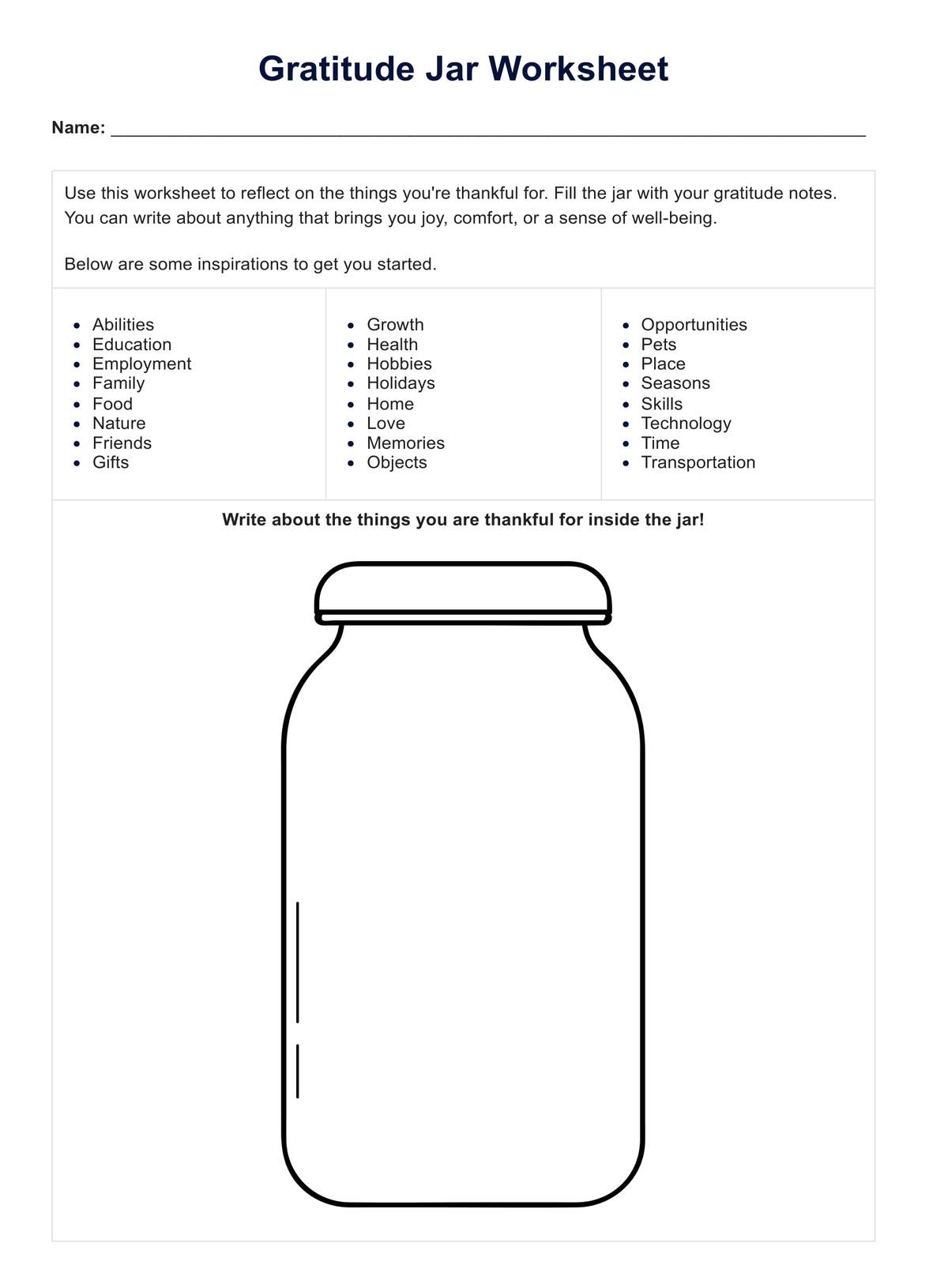The gratitude jar activity involves writing down things you're grateful for on pieces of paper and placing them in a jar, creating a collection of positive memories and thoughts.

Gratitude Jar Worksheet
Enhance well-being in your practice with our Gratitude Jar Worksheet. Empower your clients to cultivate positivity and gratitude in their lives.
Use Template
Gratitude Jar Worksheet Template
Commonly asked questions
In a gratitude jar, you write down things you're thankful for, such as experiences, people, achievements, or anything that brings you joy and appreciation.
The gratitude jar activity can be done daily, weekly, or whenever you need to reflect on and record the positive aspects of your life.
EHR and practice management software
Get started for free
*No credit card required
Free
$0/usd
Unlimited clients
Telehealth
1GB of storage
Client portal text
Automated billing and online payments











